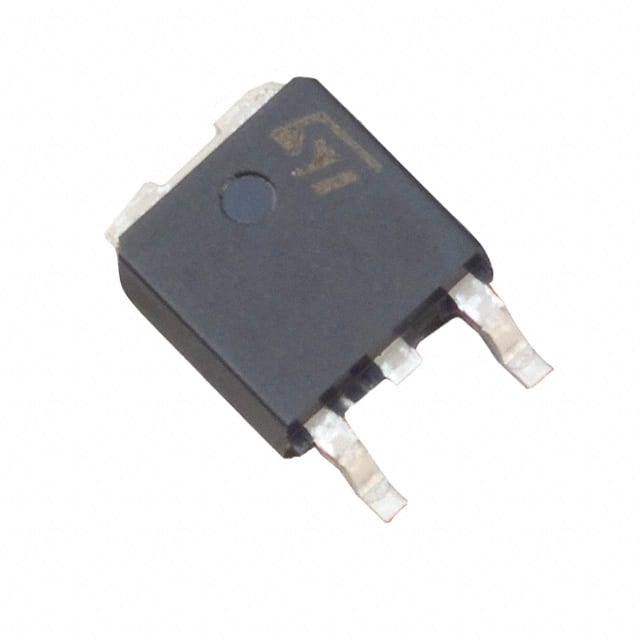Xem thông số kỹ thuật để biết chi tiết sản phẩm.

STTH802B-TR
Introduction
The STTH802B-TR is a high-performance Schottky rectifier designed for use in various electronic applications. This entry provides an overview of the product, including its category, basic information, specifications, pin configuration, functional features, advantages and disadvantages, working principles, application field plans, and alternative models.
Product Overview
Category
The STTH802B-TR belongs to the category of semiconductor devices, specifically as a Schottky rectifier.
Use
It is commonly used in power supply units, switch-mode power supplies, and other applications requiring high-efficiency rectification.
Characteristics
- High efficiency
- Low forward voltage drop
- Fast switching capability
- Low reverse leakage current
Package
The STTH802B-TR is typically available in a surface-mount DPAK (TO-252) package.
Essence
The essence of this product lies in its ability to provide efficient rectification with minimal power loss.
Packaging/Quantity
It is usually supplied in reels or tubes, with quantities varying based on manufacturer specifications.
Specifications
- Maximum Average Forward Current: 8A
- Peak Reverse Voltage: 200V
- Forward Voltage Drop: 0.55V at 8A
- Reverse Leakage Current: 50µA at 200V
- Operating Temperature Range: -65°C to 175°C
Detailed Pin Configuration
The STTH802B-TR typically has three pins: 1. Anode 2. Cathode 3. Not connected (NC)
Functional Features
- High forward current capability
- Low voltage drop
- Fast reverse recovery time
- High operating temperature range
Advantages
- High efficiency leading to reduced power dissipation
- Fast switching capability
- Suitable for high-frequency applications
- Compact surface-mount package
Disadvantages
- Higher cost compared to standard silicon diodes
- Sensitive to voltage transients
Working Principles
The STTH802B-TR operates based on the Schottky barrier principle, where the metal-semiconductor junction allows for fast switching and low forward voltage drop.
Detailed Application Field Plans
This rectifier is well-suited for use in: - Power supply units - Switch-mode power supplies - DC-DC converters - Inverters - Motor control circuits
Detailed and Complete Alternative Models
Some alternative models to the STTH802B-TR include: - STPS8H100D (by STMicroelectronics) - SS810 (by Vishay) - MBRB20100CT (by ON Semiconductor)
In conclusion, the STTH802B-TR is a high-performance Schottky rectifier with excellent characteristics suitable for various electronic applications. Its efficient operation, fast switching capability, and suitability for high-frequency applications make it a preferred choice for designers seeking high-performance rectification solutions.
[Word count: 411]
Liệt kê 10 câu hỏi và câu trả lời thường gặp liên quan đến ứng dụng STTH802B-TR trong giải pháp kỹ thuật
What is the maximum forward voltage of STTH802B-TR?
- The maximum forward voltage of STTH802B-TR is typically 1.35V at 8A.
What is the reverse recovery time of STTH802B-TR?
- The reverse recovery time of STTH802B-TR is typically 35ns.
What is the maximum repetitive peak reverse voltage of STTH802B-TR?
- The maximum repetitive peak reverse voltage of STTH802B-TR is 200V.
Can STTH802B-TR be used in flyback converters?
- Yes, STTH802B-TR can be used in flyback converters due to its fast recovery time and low forward voltage.
What is the typical junction capacitance of STTH802B-TR?
- The typical junction capacitance of STTH802B-TR is 300pF.
Is STTH802B-TR suitable for high-frequency applications?
- Yes, STTH802B-TR is suitable for high-frequency applications due to its fast recovery time and low junction capacitance.
What is the maximum average forward current of STTH802B-TR?
- The maximum average forward current of STTH802B-TR is 8A.
Can STTH802B-TR be used in motor control applications?
- Yes, STTH802B-TR can be used in motor control applications due to its high current capability and low forward voltage.
What is the operating temperature range of STTH802B-TR?
- The operating temperature range of STTH802B-TR is -40°C to 150°C.
Does STTH802B-TR have a low leakage current?
- Yes, STTH802B-TR has a low leakage current, making it suitable for low-power applications.

